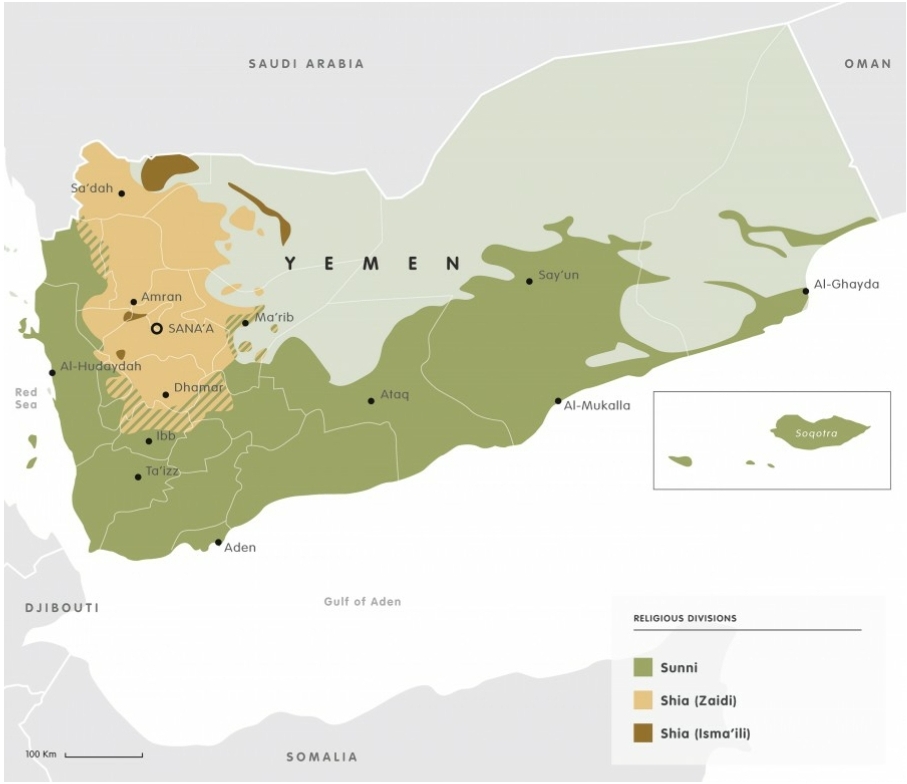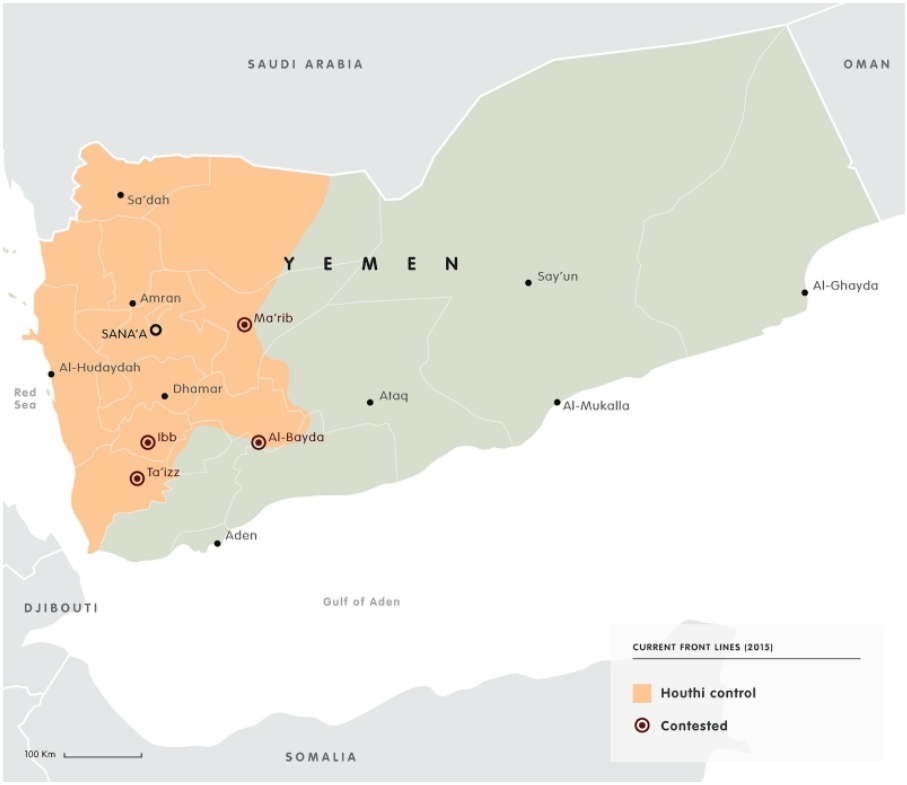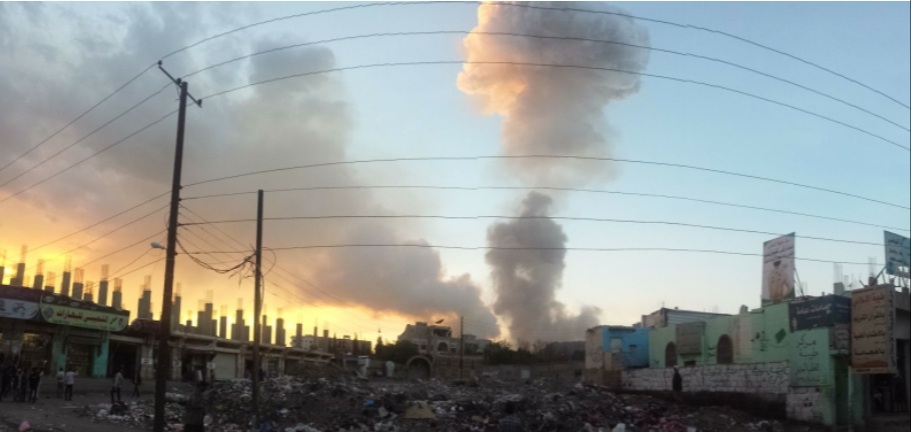In response to Russia’s alarming military invasion of Ukraine, a war that is currently poised to escalate conflicts between world powers and spur on another humanitarian crisis, virtually all U.S. state officials and media figures have opted for a staunch condemnation of the invasion. The violation of state sovereignty, the profound human cost of war and the destabilization of the region are the preeminent concerns of such figures, as well they should be. Yet, as the establishment starts beating the drum for yet another proxy war, it is worthwhile to remember the U.S.’s own horrendously gruesome and morally bankrupt involvement in foreign intervention over the last century.
There have been over fifty military interventions carried out openly or in secret by U.S. forces since 1950—From the illegal invasion of Iraq orchestrated on false pretenses, to the forever-war in Afghanistan that left the region worse than it began, to a whole host of military coups and destructive bombing campaigns unleashed on “forgotten” countries like Guatemala, Nicaragua, El Salvador, Iran, Honduras, Yugoslavia, Libya, Somalia and Syria, there is no shortage of unscrupulous atrocities worthy of open condemnation. Still, few are quite as shocking as the near-genocidal siege and aerial bombing campaign currently ravaging the country of Yemen. Saudi Arabia—our longtime ally, repressive theocratic dictatorship and oil supplier—heads the U.S. backed coalition responsible for what the United Nations called the world’s “worst humanitarian crisis.” Yet, despite the severity of the crisis and the U.S.’s direct involvement in it, the conflict has mostly been met with silence.
Yemen itself, located right below Saudi Arabia on the Arabian Peninsula, is now one of the poorest countries in the world. Roughly 80% of Yemen’s population, or 23.7 million people, are in desperate need of humanitarian aid to survive, including nearly 13 million children. Sanitation, medical resources, education, shelter, food and water supplies are scarce. More than half of the healthcare facilities are non-functional, with many of those left running lacking basic operational equipment. The country is beset with a serious famine, terminal poverty, constant airstrikes, a massive cholera outbreak, violent insurgence and a refugee housing crisis, all during the coronavirus pandemic. It’s no wonder the United Nations Children’s Fund (UNCF) declared Yemen “a living hell for children,” with 1.8 million Yemeni children having acute malnutrition.
Spearheading this catastrophe is the U.S. backed coalition strategy: the destruction of essential infrastructure; the blockading of Yemen ports to prevent the influx of desperately needed medical supplies, food and fuel; and vicious, indiscriminate cluster bomb airstrikes. Of course, the inhumane siege would be impossible without the considerable support provided by the U.S., which has been refueling Saudi aircrafts, supplying advanced weaponry and performing vital logistic and intelligence operations.
The origins of the conflict itself are intertwined with the region’s long, complex history. In 1990, Yemen weathered a tense reunification between north and south, two culturally and religiously distinct territories. The northern segment of Yemen, formerly the Yemen Arab Republic (YAR), had cultural ties to the Ottoman empire and a strong Zaidi Shia faith. In contrast, the southern territory, formerly the People’s Democratic Republic of Yemen (PDRY), had ties to the British empire and a predominantly Sunni demographic.

Divisions between Sunni and Shia populations are a focal point for many conflicts in the Middle East; Saudi Arabia and the coalition it heads today are themselves Sunni based, while rival powers like Iran have large Shia denominations. The region is further divided by pro-western and anti-western sentiment. These distinctions contextualize the Yemen crisis, which is contoured by those divisions.
Political tensions in Yemen started building up as far back as the early 2000s. The authoritarian regime backed by the U.S. and led by dictator Ali Abdullah Saleh began forming into an oligarchy, and popular opposition accused the regime of corruption, mismanagement, and ignoring the needs of the poor. In 2004, the Zaidi Shia based Al-Houthi rebellion broke out in the north, condemning the regime as pro-American. The Salah regime responded harshly to the movement, causing further conflict to erupt over the coming years.
Meanwhile, the south was experiencing its own issues. In 2007, a massive string of demonstrations cropped up all along the territory. Protests organized by military officers resentful of meager pensions expanded to include civil servants, teachers and youth, who accused the regime of systemic discrimination against southerners.
The civil war in the north and protests in the south led to a significant loss of legitimacy for the Salah regime, which struggled to quell dissidence and address the country’s dire economic and social problems. This all came to a head in 2011 during the “Arab Spring,” the notorious pro-democracy movement that surged through the Middle-East after populist tides toppled dictatorships in Tunisia and Egypt. Protesters demanded that Salah step down and allow more of his political opposition into government positions. Eventually, Salah would agree to leave in exile and sign vice president Abd Rabbuh Mansur Hadi into power.
The agreement that brought Hadi into power also included the formation of the National Dialogue Conference (NDC), a political meeting designed to negotiate terms between Yemen’s many factions through the transition of power. Yet, many groups were dissatisfied with Hadi and the NDC; southern sentiment continued to lean towards secession, and the northern Houthi rebels still condemned the government as being disaffected from the needs of its people.
Conflict in Yemen broke loose again in 2014 after the Hadi administration came under criticism for lowering oil subsidies to attract foreign investment. Yemeni security forces opened fire on a non-violent protest mobilized by Houthi rebels, igniting a series of escalating confrontations that led Houthi tribesmen to seize the capital of Sanaa and formally take power in the north. Hadi fled Yemen to Saudi Arabia and requested military intervention from foreign powers. In 2015, the U.S. backed coalition began its brutal campaign to reinstate Hadi into power, leading Yemen to the disastrous state it’s in today.

While this helps to explain how the regional conflict came to fruition, it doesn’t explain the U.S.’s involvement there. Justifications for the war abound, including a need to support our allies, stabilize the region and counteract “Iranian influence” over the Houthi movement. This narrative is supported by the state departments’ claims that Iran has been arming the Houthi rebels with weapons—despite this directly contradicting our own intelligence reports and ignoring the fact that Houthi troops had already acquired a bonanza of weapons that the U.S. manufactured and sold to the previous regime.
While U.S. state officials claim to be promoting stability in the region, darker economic and strategic motivations for prolonging the war loom. Raytheon Technologies, the monolithic arms manufacturer based in the U.S., has close ties with the Saudi royal family and maintains a strong influence over Washington decision-makers through their pervasive lobbying practices.
“It is a well-determined policy of these countries to continue supplying and supporting a few ultra-rich oil states that help maintain the profitable and dominant position of western arms manufacturers,” wrote Yemen-based humanitarian organization Mwatana in a 128-page report on the conflict. “Western states have made a clear choice to support undemocratic regimes in a war that has denied the people of Yemen the most basic human rights.”
Beyond enriching a few powerful arms manufacturers, the conflict also aligns with the U.S.’s strategy for gaining geopolitical ground in the region; having a pro-American government in Yemen ensures access to the oil trade that passes through the strait of Bab-El Mandeb and greater influence over the Middle-East.
In recent years, progressive representatives have been pushing back against the gruesome campaign, citing its immoral nature and constitutional illegality.
“We will not sit by as the Constitution is ignored and the Yemeni people suffer seven years into this unauthorized war,” wrote Reps. Pramila Jayapal (D-Wash.) and Peter DeFazio (D-Ore.) in a piece published in The Nation on Feb. 7, 2022. “Since 2015, the United States has directly participated in this war without authorization from Congress. This is in clear violation of Article I of the Constitution and the War Powers Resolution of 1973, which grants Congress the power to declare war and authorize U.S. military involvement.”
Facing mounting pressure, the Biden administration announced a year ago that it would be withdrawing its support for the Yemen conflict and switching to a defensive strategy that focused on “diplomatic solutions.” Yet, the administration has failed to deliver any meaningful change. Instead, they’ve doubled down by supplying a billion dollars in weaponry and continuing the logistical support that sustains the bloody campaign.
“The disturbing truth is that the United States, through its military involvement in the Saudi-led coalition’s war against the Houthis in Yemen, has been directly participating in this horrific war for too long. It’s time for this complicity to end,” Jayapal and DeFazio continued.
It is undoubtedly necessary to denounce the legitimacy of aggressor wars prosecuted by global powers. As such, the imperialist policies of other states, such as the recent incursion into Ukraine by Russia, should be vehemently condemned. Yet, equal consideration must be given to the wars we ourselves propagate, wars that are far easier for us to end. As Noam Chomsky and Edward Herman wrote in the iconic dissection of western media Manufacturing Consent, it is the division of “worthy and unworthy victims” that creates the conditions for propaganda and endless war.

